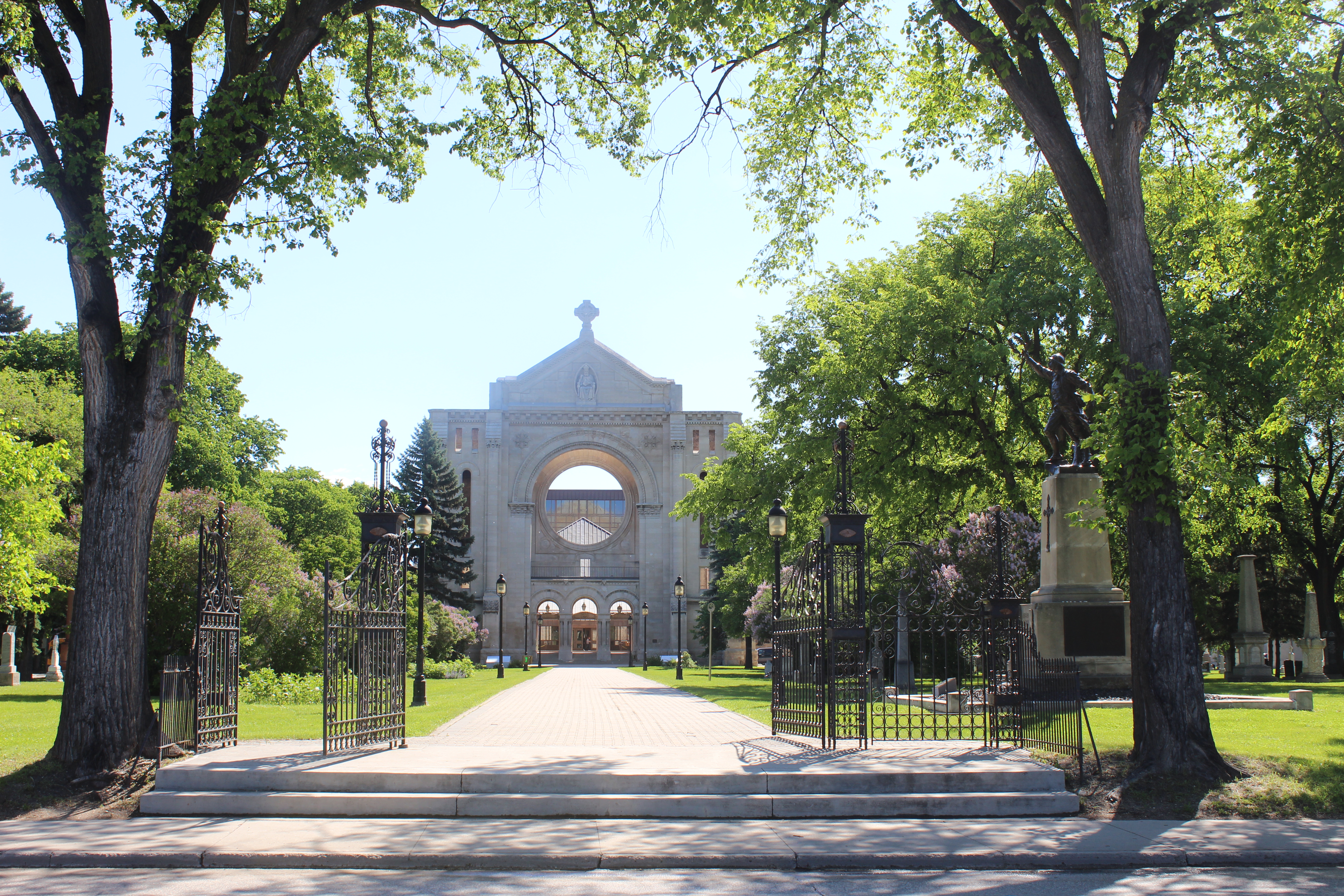Saint-Boniface Cathedral was originally constructed in 1818 by early settlers in Winnipeg, however as the population grew so was the need for a larger church. In 1906 this cathedral was commissioned (it was to be the 5th church that was built) and became known as Mother Church of Western Canada and renowned for it’s beautiful architecture.
Unfortunately, in 1968 a fire destroyed most of the church leaving behind the facade and parts of the side walls. A 6th church has since been built inside the walls as a blend of the old and the new.
Today the cathedral holds masses in French throughout the week and during the summer months there is a theater production in the cemetery recounting the history of the French Canadian and Metis population in Manitoba.
For more information about Saint-Boniface Cathedral you can check out their website.
Visiting Saint-Boniface Cathedral
While I was exploring the city of Winnipeg in Manitoba, I spotted this cathedral from across the Red River. It was partially hidden by trees but it’s grandeur was evident even from far away. I had been debating whether or not I had the time to cross over to the other side of the river, and this cathedral cemented my decision.
There are a couple of things that stood out to me when I reached the cathedral. The first was the beautiful green space that surrounded the cathedral. Flowers, mature trees, and well kept grass created a sharp contrast from the rest of the street. I also adored the wrought iron gates that welcomed you onto the site. Of course what was the most intriguing was the fact that all that remained of the original structure was the facade.
I loved walking around and discovering the original church and marvel at the effect of having the outer walls remain while a new church has been rebuilt on the inside. Moreover, this is the burial site of Louis Riel and other notable persons in the history of Manitoba.
If you want to know more about visiting Winnipeg than check out my post on the top 10 attractions to visit.







